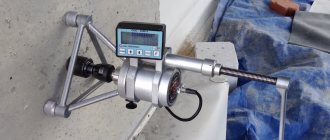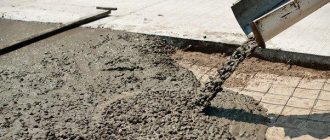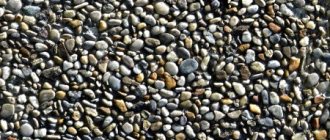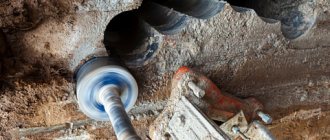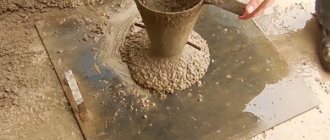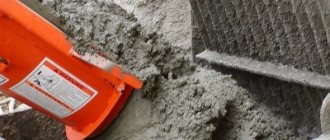Construction mixtures used in the construction of foundations must gain strength. Only after the composition has set can you move on to the next stage of work. Given the large thickness of the layer, the solution will not be able to harden quickly; this will require at least 3 days. A concrete hardener helps speed up the setting of the composition without disturbing the structure of the material.
Conditions for the use of accelerators
Concrete hardening accelerators are used in the following cases:
- Frosty weather.
The construction mixture hardens evenly at positive temperatures and air humidity of 90%. The last parameter must be maintained at the same level, otherwise the solidification rate will decrease. The structure will become fragile and lose its supporting functions. At low temperatures, concrete hardens 2-3 times slower. In frosty weather, the water crystallizes and the structure of the monolith is disrupted. Hardening of the composition is ensured by adding chemicals and heating.
- The need for early dismantling of formwork.
Adding a concrete setting accelerator allows you to move on to the next stage of work before the recommended time has elapsed.
- Large-scale production of reinforced concrete blocks.
If accelerators are used for concrete, fewer forms can be used. The quality of the products produced does not deteriorate.
Flaws
Are there any disadvantages to such compositions? As practice shows, they have no shortcomings. Among the disadvantages, we can only note the requirements for application and storage temperature. The composition can only be stored at temperatures from +5 to +30 degrees Celsius. At the same time, it must be protected from moisture and direct sunlight. Next we will look at the most popular formulations.
Classification
Based on the nature of the effect on the concrete mixture, the following types of chemicals are distinguished:
- Additives that do not change the properties of cement paste components.
Such agents increase the solubility of ingredients and reduce the crystallization temperature of water.
- Hydration activators.
The additive is mixed with cement. The silicate components of the building material are destroyed. Cement dissolves faster in water, reducing its crystallization temperature.
- Cement hydration accelerators, the principle of operation of which is based on exchange reactions.
Promote the formation of gels and calcium hydroxides, which causes water to begin to freeze at a lower temperature.
- Additives that generate heat when cement is dissolved.
"Lakra"
This is a universal deep penetration primer. Absorbs to a depth of six millimeters. At the same time, the mixture can strengthen fragile and porous structures. This composition is used when preparing external and internal coatings for decorative finishing or before using leveling mixtures. As consumers note in their reviews, Lakra is capable of increasing the adhesion of the base by 15 percent. At the same time, the consumption of building materials that are subsequently applied to such a floor is reduced. Another plus is the elimination of the formation of microorganisms and mold. This is achieved through the presence of fungicides. Lakra does not need dilution. It can be laid both mechanically and manually.
How to speed up the hardening process of concrete
There are different ways to accelerate the hardening of concrete, the most effective of which is the use of chemical additives.
What determines the rate of hardening?
The following factors influence the hardening of concrete:
- Air temperature.
The lower it is, the longer you need to wait before dismantling the formwork. Normal humidity is required to gain strength. Deviation of the indicator from the norm to a greater or lesser extent disrupts the hydration of cement. In hot weather, concrete hardens quickly, but the structure becomes fragile. The optimal time for concreting is September.
- Brand strength.
The higher this indicator, the faster the material sets.
- Estimated load on a monolithic structure.
Vertical formworks are removed before horizontal ones. This rule also applies to cellular concrete.
Ways to speed up the process
There are 2 methods used to quickly set the building mixture: autoclave treatment and the introduction of chemical additives - concrete hardening accelerators.
The first method cannot be used when building structures with your own hands. The concrete block must be placed in a special chamber with high humidity. Hot steam treatment allows concrete to gain strength in 2-3 hours.
Effect of hardening accelerator additives
The principle of action of the hardener is based on accelerating chemical reactions between the ingredients of the mixture. Under the influence of additives, gels are formed that absorb large amounts of moisture.
Accelerators have different effects on concrete:
- increase the surface area of the monolith, reducing the average pore size;
- accelerate the binding of water (this is achieved due to a spontaneous increase in the concentration of dissolved components);
- have a positive effect on the structure of the artificial material at all levels (the number of micropores increases, the number of macropores decreases).
Main types of additives
There are these types of additives for rapid hardening of concrete:
- Dry hardeners for concrete screeds (toppings).
The mixtures contain special types of cement and fillers resistant to mechanical damage. Sometimes chemicals are added. This composition is applied to freshly laid concrete, resulting in a hard coating on the surface.
- Gas formers.
Promotes the entrainment of air into the structure of the material. The products are used in the production of aerated concrete. Adding substances reduces the weight of the structure, but negatively affects its strength. The most common representative of this group of additives is aluminum powder. When adding the product, vibration treatment is simultaneously performed. The powder combines with cement to form calcium aluminate, which accelerates setting.
- Strength gain accelerators.
Complex additives reduce the time to obtain high performance qualities by 2-3 times. Early removal of formwork speeds up the construction process. Additives are used to restore the properties of cement that has been stored for a long time. There is no loss of concrete strength when using this material.
- Setting accelerators.
Accelerate the initial hardening of the mixture. Used for emergency repairs and sealing holes in concrete containers. This group includes liquid glass.
REFLOOR LI-CH120
This is a two-component impregnation for concrete. Typically this composition is used for industrial floors. It is a liquid, chemically active composition. Designed to strengthen and remove dust from foundations. Suitable for interior floors, exterior areas, garages and parking lots. Gives concrete strength and resistance to mechanical loads. The surface does not crack due to the appearance of a single layer of double crystalline salts. A floor treated with a two-component impregnation has a soft shine and does not need periodic updating.
Domestic additives
The following concrete hardening accelerators are produced in Moscow and other Russian cities:
- Fort UP-2.
The use of a complex additive can increase strength by 30-60%. The product is compatible with concrete of different grades of mobility. The composition has the appearance of a dark powder. It contains salts, which are introduced after diluting the cement-sand mixture with water. The powder is used to accelerate the setting of porous concrete.
- Calcium chloride.
The additive was created to accelerate the strength gain of concrete products and increase their service life. The active substance receives moisture from the air, promoting its accumulation in the structure of the material.
- Concrete-F.
The additive is made on the basis of calcium chloride, which reduces the hardening time. The positive qualities of the product include increasing the resistance of concrete to freezing and wear, and the possibility of accelerated removal of poured blocks from molds. The hardener is added at the stage of mixing dry components with water. Concrete-F is often used in the manufacture of paving stones so that the blocks do not have large pores and chips.
- Relaxor.
Included in the group of superplasticizers produced in the form of powder, liquid or gel. The complex action agent reduces the hardening time and strength gain of monolithic structures. Relaxer is used to increase the resistance of the material to frost. The formwork can be removed one day after pouring. When using the additive in combination with heating, the hardening time is reduced by 4-8 hours.
- Relamix.
The series includes several products with different properties and purposes. All types of additives increase the strength of the monolith in the early stages of setting. They increase the resistance of the concrete mixture to excessive moisture and aggressive substances.
"Protexil"
It is a universal composition. Suitable for:
- strengthening freshly poured floors;
- dust removal of floors;
- restoration of worn ties.
This product belongs to deep penetration impregnations. "Protexil" works at a depth of up to five millimeters. Can be used even on low-quality concrete. After absorption of the composition, the concrete surface is resistant to:
- mechanical loads;
- abrasion;
- moisture;
- aggressive chemical influences.
Among the advantages are the affordable cost. But the downside is the increased consumption. It will increase if the surface is old. The product itself is applied in two layers.
Consumer Reviews
So, we looked at what a concrete hardener is and what types it comes in. Of course, this is a fairly useful composition for any concrete coating, which gives it greater strength and prevents the development of microorganisms.
In their reviews, both ordinary consumers and construction experts emphasize the numerous advantages of hardeners. Of course, you can also come across negative comments about the material, but it is worth noting that the quality of the product largely depends on the manufacturer. Therefore, you should give preference to proven brands. Concrete hardener has a number of advantages, so it is definitely worth paying attention to when performing repairs.
Do-it-yourself production and application of topping (for concrete floors)
There are 2 main reasons for applying topping in everyday life - getting rid of dust and waterproofing the surface. It is always expensive to purchase an industrial hardener, but there is a simple recipe for making the mixture yourself:
- liquid glass – 1.5 kg;
- cement solution with fine, purified sand in a ratio of 1:4 - 2.6 kg;
- quartz fine sand – 1.5 kg;
- concrete solution – 2.2 kg.
This recipe can be used not only on floor coverings, but also to protect walls from moisture. The thickness of the layer applied to the concrete should be 3-5 mm. If additional strengthening is necessary, a layer of liquid glass can be applied on top.
When applying topping, it is important to follow the following technological steps:
- The freshly poured screed is rubbed down with a grinding machine.
- Starting from the window side, apply the mixture evenly.
- The second stage of grinding is carried out: the dry mixture penetrates to the maximum depth into the solution.
- Excess dry mixture is distributed over the surface, and the next (third) grouting is carried out.
- After four days, the frozen floor is cleaned with blade knives. This step is repeated until the surface becomes glossy.
- Special seams are made to prevent shrinkage cracks from occurring, which are filled with sealant.
Summarizing
In industrial production, the use of retarders is a necessity. It is important to understand the properties of the additive required for the solution so that the result turns out to be exactly what you need. The moderator must be selected based on:
- purposes of use;
- climatic conditions;
- type of concrete.
Information sources:
- GOST 24211-2008 (introduced 01/01/2011).
- Concrete retarder Bisil Retarder SKh – Helios LLC (date of access: 11/02/2019).
- Set and hardening retarders – Sika AG, Switzerland (date of access: 11/02/2019).
- Concrete set retarders – Poliplast-Yug LLC (date of access: 11/02/2019).
"Elakor-ED"
This is an epoxy hardener that penetrates to a shallow depth (no more than two millimeters). Suitable for preparing screeds before installing self-leveling floors. Helps increase resistance to mechanical loads by 2 times. Protects the floor from moisture and completely removes dust. When cleaning, it is permissible to use any detergents. Externally, this floor resembles varnished. "Elakor-ED" is suitable for warehouses, garages, parking lots, workshops and exhibition halls. The composition is also completely environmentally friendly, so it can be used in food industry facilities.
Operating principle
To use plasticizers correctly, you need to understand how they work. Parts of a mixture, considered as a system, having the same qualities and composition, and separated from the remaining elements by a separation surface, are a phase.
Water, sand, cement, which are present in standard cement mortar, as solids, are also considered a separate thermodynamic phase.
The specific surface area (total) of particles increases with decreasing size. In turn, with an increase in the surface area of interacting elements, the quality of chemical reactions increases.
The components of mortars are dusty fine cement and relatively coarse sand, which are added to water when mixed. The cohesive forces acting at the interface between the molecules in the surface layer of water create high surface tension. This leads to heterogeneous and incomplete wetting of the cement with difficulty spreading the liquid over the surface.
With the same amount of water, the viscosity of the solution increases greatly when the surface of the cement taking part in chemical reactions (specific) in turn increases. This is possible if smaller and smaller fractions of cement are formed in the mixture due to the disintegration of large particles when their electrical charges, which have different polarities, are neutralized.

